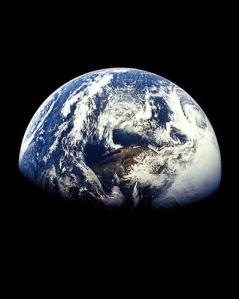 Green 52 wants to remind everyone that today (April 22, 2011) is Earth Day. What can you do to adopt an environmentally responsible habit or practice that you can carry into the other 364 days each year?
Green 52 wants to remind everyone that today (April 22, 2011) is Earth Day. What can you do to adopt an environmentally responsible habit or practice that you can carry into the other 364 days each year?
Make an Earth Day Resolution:
Earth Day is celebrated in over 175 countries and has been organized for over 40 years. This year’s theme is One Billion Acts of Green (see EarthDay.org for details). Please remember that Earth Day is an opportunity to pause from your normal routine of consumption, and think about conservation. It’s a chance to consider how you impact the environment, and what you might be able to do to reduce that impact. Just as many people create New Year’s Resolutions before January 1st of each year, consider making an “environmental responsibility resolution” on Earth Day.
Environmental Responsibility can be easy – find 52 tips here!
At Green 52, we devoted an entire year to creating weekly green living and environmental responsibility tips at our website, Green52.com. On Earth Day or anytime this year, please review the green tips and see if you can find one or more environmental responsibility ideas that you can incorporate into your daily lives.
If your friends and family aren’t aware of Earth Day, and don’t understand how simple it can be to reduce your personal impact on the environment, suggest that they read the ideas on Green52.com.
Corporate efforts to cash in on Earth Day:
Also, be aware that many companies, including corporations with an international/global presence like Starbucks, may try to cash in on Earth Day. By example, I see that today (1 day out of 365) Starbucks is offering a free brewed coffee to anyone who brings in a reusable travel mug to fill (see info here). The idea and “contribution” by Starbucks toward bringing awareness to Earth Day and encouraging others to try to shift their habits/focus is great.
However, it would be nice to know approximately how many Starbucks paper cups make their way to the landfill each year because reusable mugs are not used by the average consumer on the other 364 days. While some of the blame may rest with the consumer, it’s certainly possible that if Starbucks (and other companies) did more all year long to contribute to conservation as much as they contribute to consumption, the world would be a better place. In viewing the free coffee Earth Day offer at the Starbucks website, it says: “Last year, when we did a similar promotion on Earth Day, more than 1.2 million of you participated.” (http://www.starbucks.com/blog/happy-earth-day/993)
So, if 1.2 million people took advantage of the “Earth Day special” at Starbucks in 2010, how many paper cups are used each day and thrown into landfills? Maybe together, consumers and the businesses that cater to such consumers, can find ways to extend the ideas and responsibility that people think about on Earth Day, into the other 364 days each year.


Recent Comments